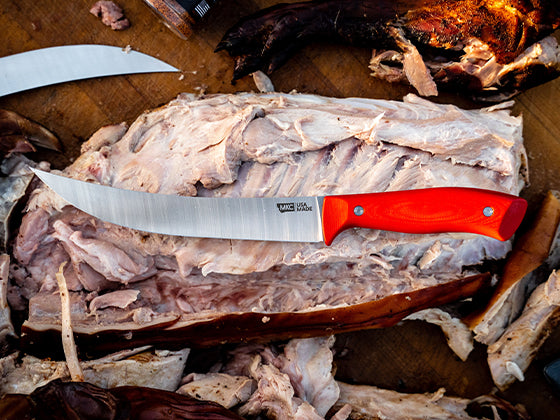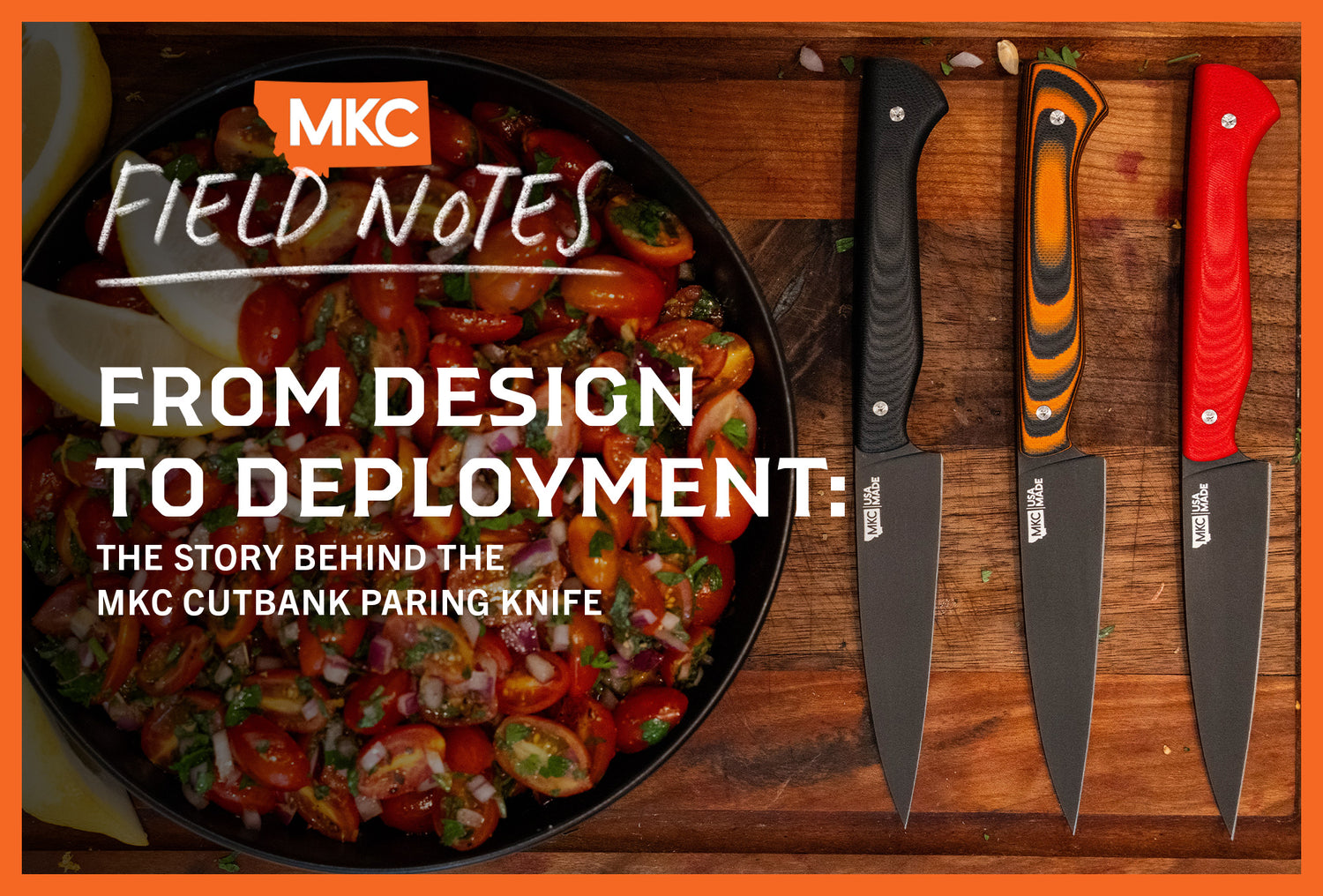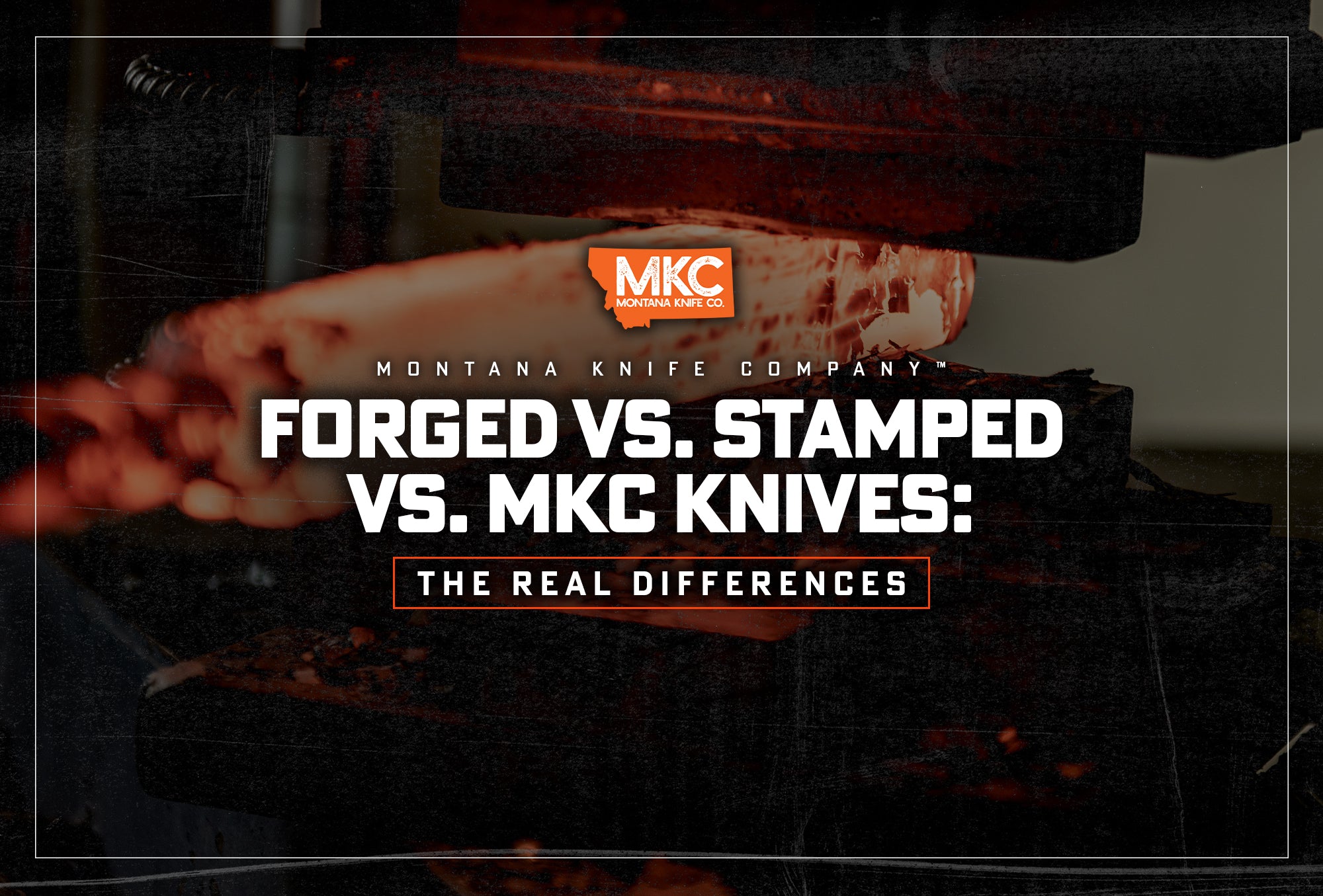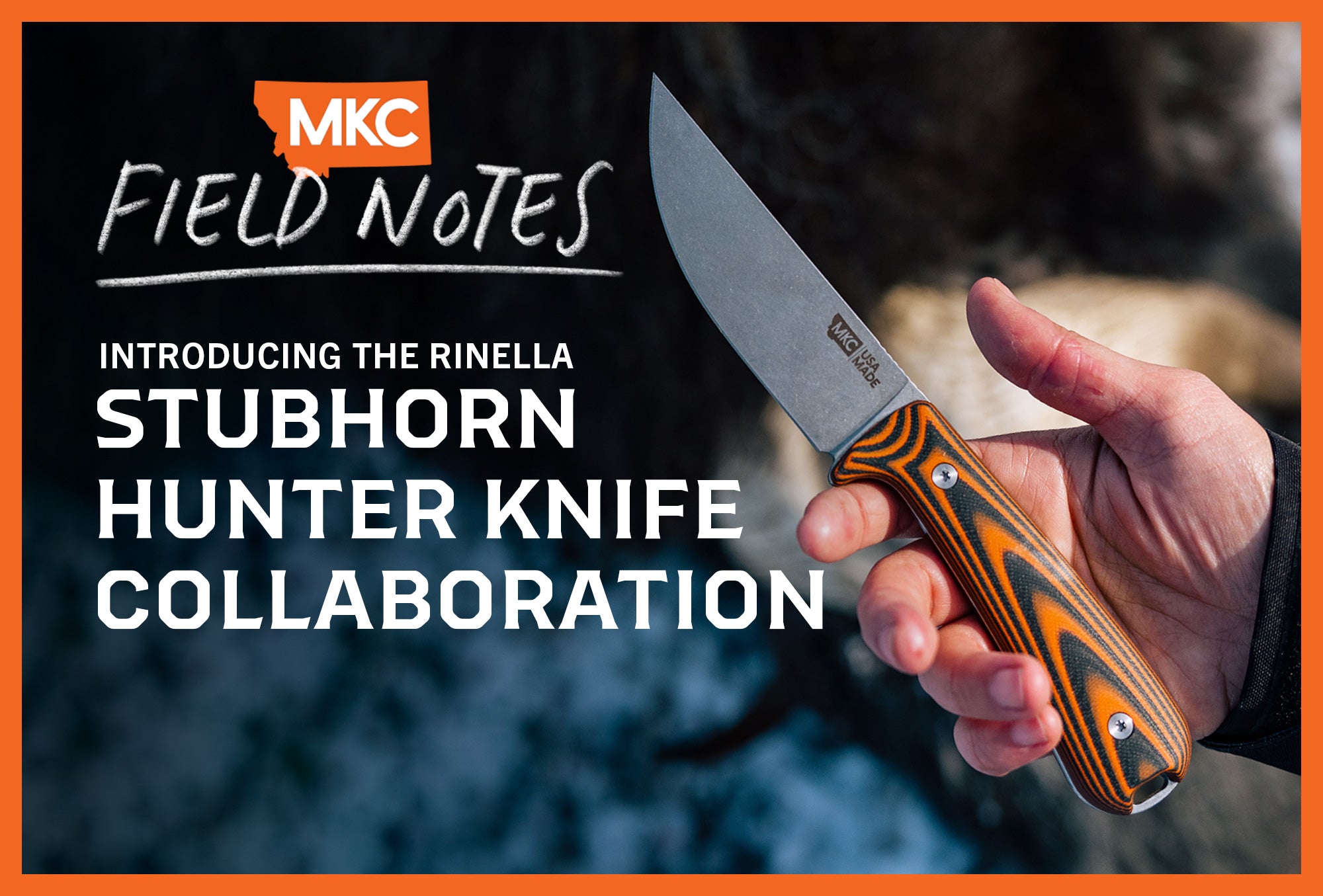For a long time, I’ve wanted to make a general-use cooking knife that’s less aggressive than the rest of MKC’s lineup. Something compact, thin, light, and ergonomic, but just as useful as our other MKC blades.
The MKC Paring Knife has finally brought that dream to fruition.
It’s the essential fine-cutting blade for hunters, outdoorsmen, and home chefs. Whether you’re processing herbs and spices, vegetables, or meat, it’ll do the trick. It also fits right in with the rest of the MKC Culinary line.

What Makes the MKC Paring Knife Stand Out?
We designed the MKC Paring Knife for food prep in your kitchen and at camp. I envisioned something MKC knife lovers could use “closer to the table.” Its finger choil gets your front knuckles off the cutting board, but its downward-pointing tip keeps you safe. (More on that later.)
The MKC Paring Knife is slightly longer than a traditional paring knife, at around four inches. This helps it succeed as a multi-purpose food prep knife. As one of our thinnest blades, it’s delicate enough to do highly precise tasks but long enough to chop larger quantities of food. It’s perfect for small surgical slices.

Design Process Breakdown
The MKC Paring Knife is just as thick as our standard Speedgoat knives, with a flat utility grind all around. We took care to eliminate any hot spots in the handle so that you can use it comfortably with any grip — even a pinch grip at the blade.
We put a little extra effort into the handle. To get it thin enough, we designed custom hardware not used in any of our other blades. I think you’ll like the result.
The MKC Paring Knife has our signature flared handle with a rounded-out choil that lets you choke up on the grip. The blade resembles a modified Wharncliffe, with a slight belly on the blade geometry. That belly gives you just enough rocking motion to guide you through your motions on a cutting board.
The MKC Paring Knife sits at the opposite end of the spectrum from our new MKC Cattlemen Cleaver. It fills the need left by our larger chef’s knives, too. The result is excellent coverage for food prep.
The MKC Paring Knife’s handle is made of G10 plastic for durability, water resistance, ergonomics, and grip, even in wet and slimy conditions. We send it out with its own Kydex blade holster to keep it sharp, even if you store it in a drawer.
Tips and Best Practices for the MKC Paring Knife
Care for your MKC Paring Knife the same way you care for your other chef’s knives. Keep it clean and dry, don’t let it soak in water, don’t run it through the dishwasher, and store it in its holster to protect the blade. Use a sharpening stone when necessary and a honing rod for touch-ups.
Too many people rely on the thickness and weight of their kitchen knives to process food. It’s not their fault — they may not know how it feels to use a truly sharp knife in the kitchen.
When you first use a razor-sharp knife with good steel and an adequate heat treatment, it feels almost laserlike. Many of us rely on dull knives, not realizing we’re practically bludgeoning our food with them.
A sharp knife is a safe knife. A dull knife is dangerous. Once you start using a sharp, well-made blade in the kitchen, you’ll never want to use a dull blade again. That’s the way it should be, both for your safety and your cutting experience.
by Josh Smith, Master Bladesmith and Founder of Montana Knife Company







































